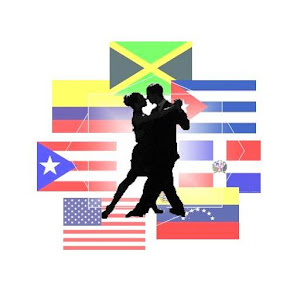A look at the origin of SalsaBy: Jaime Andrés Pretell
It is not only Cuban; nevertheless we must give credit to Cuba for the origin and ancestry of creation. It is here where Contra-Danze (Country Dance) of England/France, later called Danzón, which was brought by the French who fled from Haiti, begins to mix itself with Rhumbas of African origin (Guaguanco, Colombia, Yambú).
Add Són of the Cuban people, which was a mixture of the Spanish troubadour (sonero) and the African drumbeats and flavora and a partner dance flowered to the beat of the clave. This syncretism also occurred in smaller degrees and with variations in other countries like the Dominican Republic, Colombia, Puerto Rico, among others.
Bands of these countries took their music to Mexico City in the era of the famous films of that country (Perez Prado, most famous ...). Shortly after, a similar movement to New York occurred.
In these two cities, more promotion and syncretism occurred and more commercial music was generated because there was more investment. New York created the term "Salsa", but it did not create the dance.
The term became popular as nickname to refer to a variety of different music, from several countries of Hispanic influence: Rhumba, Són Montuno, Guaracha, Mambo, Cha cha cha, Danzón, Són, Guguanco, Cubop, Guajira, Charanga, Cumbia, Plena, Bomba, Festejo, Merengue, among others.
Many of these have maintained their individuality and many were mixed creating "Salsa".If you are listening to today's Salsa, you are going to find the base of són, and you are going to hear Cumbia, and you are going to hear Guaracha. You will also hear some old Merengue, built-in the rhythm of different songs. You will hear many of the old styles somewhere within the modern beats.
Salsa varies from site to site. In New York, for example, new instrumentalization and extra percussion were added to some Colombian songs so that New Yorkers - that dance mambo "on the two" - can feel comfortable dancing to the rhythm and beat of the song, because the original arrangement is not one they easily recognize. This is called "finishing," to enter the local market. This "finish" does not occur because the Colombian does not play Salsa, but it does not play to the rhythm of the Puerto Rican/Post-Cuban Salsa. I say Post-Cuban, because the music of Cuba has evolved towards another new and equally flavorful sound.
Then, as a tree, Salsa has many roots and many branches, but one trunk that unites us all.
The important thing is that Salsa is played throughout the Hispanic world and has received influences of many places within it. It is of all of us and it is a sample of our flexibility and evolution.
If you think that a single place can take the credit for the existence of Salsa, you are wrong. And if you think that one style of dance is better, imagine that the best dancer of a style, without his partner, goes to dance with whomever he can find, in a club where a different style predominates. He wouldn't look as good as the locals. Each dancer is accustomed to dance his/her own style.
None is better, only different. ¡¡¡Viva la variedad, ¡¡¡Viva la Salsa!!!
http://www.centralhome.com/ballroomcountry/salsa.htm
Tuesday, December 4, 2007
Subscribe to:
Post Comments (Atom)



No comments:
Post a Comment